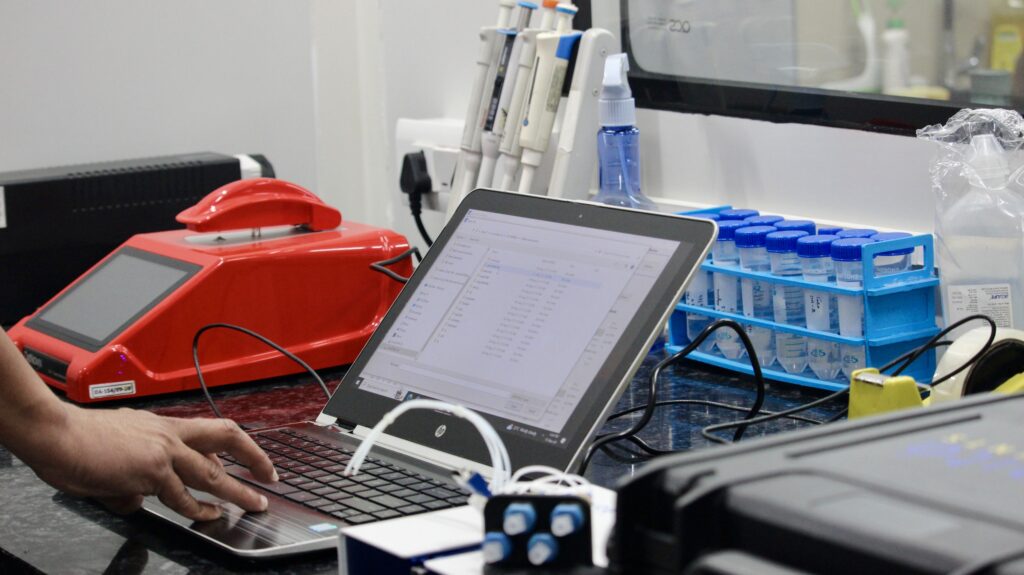
Technology plays a crucial role in accelerating innovation and reducing development risks in the ever-evolving fields of drug discovery and biologics. One such breakthrough that has transformed how researchers characterize molecular interactions is Surface Plasmon Resonance (SPR).
SPR is widely recognized as a gold-standard technique for real-time, label-free analysis of biomolecular interactions. In 2025, its role in binding kinetics, affinity measurement and specificity assessment continues to be invaluable, driving advancements in both small-molecule drug discovery and biologics development.
This article explores how SPR technology shapes drug discovery and biologics, key applications and future trends that will further revolutionize the industry.
Understanding SPR Technology
What is SPR? Surface Plasmon Resonance (SPR) is an optical biosensing technique that enables real-time monitoring of molecular interactions without the need for labels or secondary reagents. SPR technology relies on the principle that when polarized light hits a metal surface, it excites free electrons (plasmons), which changes the refractive index of the surrounding medium. These changes allow researchers to measure biomolecular binding events with high sensitivity.
Why is SPR Important? Unlike traditional binding assays that provide only endpoint measurements, SPR offers kinetic insights such as:
- Association rate (kon) – How fast a molecule binds to a target
- Dissociation rate (koff) – How quickly a molecule disengages
- Equilibrium dissociation constant (KD) – A measure of binding affinity
These real-time kinetics enable researchers to differentiate between weak, transient interactions and strong, durable bindings, making SPR indispensable for drug development and biologics characterization.
SPR in Drug Discovery
1. Hit Identification and Lead Optimization
SPR is widely used in the early stages of drug discovery, particularly for screening potential small-molecule inhibitors, antibodies, and biologics. Researchers immobilize a target protein (such as an enzyme or receptor) on an SPR sensor chip and screen compound libraries to identify promising drug candidates.
Case Study: A biotech company used high-throughput SPR screening to identify novel inhibitors for a kinase involved in cancer. By screening 50,000+ compounds, the team rapidly pinpointed high-affinity candidates that progressed into preclinical studies 30% faster than traditional methods.
2. Binding Kinetics and Affinity Characterization
SPR is superior to traditional ELISA or fluorescence-based assays because it provides a complete kinetic profile of molecular interactions. This is crucial for lead optimization, where understanding how a drug binds (and how long it stays bound) impacts its efficacy and safety.
Example: During biosimilar development, SPR was used to compare the binding kinetics of a biosimilar monoclonal antibody with its reference product. Achieving similar kon and koff values was critical for demonstrating biosimilarity and regulatory approval.
3. Screening for Off-Target Interactions
Off-target interactions are a major reason why drug candidates fail in clinical trials. SPR allows researchers to flow potential off-target proteins over immobilized drug candidates to identify unwanted binding events early in development, reducing costly failures.
Key Takeaway: SPR’s ability to detect weak, transient interactions makes it ideal for improving drug specificity and safety profiles.
SPR in Biologics Development
1. Quality Control in Biologics Manufacturing
For biopharmaceutical production, maintaining batch-to-batch consistency is critical. SPR is widely used to:
- Monitor binding affinity and specificity of monoclonal antibodies
- Detect changes in glycosylation patterns
- Verify long-term stability and formulation integrity
Case Study: A pharmaceutical company uses SPR for lot release testing of its best-selling monoclonal antibody for cancer therapy. SPR ensures that each batch meets strict binding kinetics criteria, maintaining therapeutic efficacy and safety.
2. Accelerating Biosimilar Development
Biosimilars require extensive comparability studies to match the binding profile of their reference biologic. SPR provides:
- Quantitative comparison of biosimilar vs. originator binding kinetics
- Regulatory compliance data for biosimilar approval
- Rapid screening of formulation changes during development
3. Antibody Engineering & Optimization
SPR is an essential tool in antibody engineering, allowing researchers to:
- Improve affinity and stability through iterative mutations
- Optimize Fc region modifications for better immune responses
- Select low-immunogenicity candidates for clinical use
Future Trends in SPR Technology
1. AI & Machine Learning Integration
AI-powered SPR platforms are now enabling automated data analysis and predictive modelling. These innovations:
- Reduce human error in kinetic measurements
- Accelerate lead optimization and hit identification
- Improve drug-target interaction predictions
2. High-Throughput SPR Systems
Advances in microfluidics and sensor chip design are enabling SPR to screen thousands of compounds simultaneously, cutting down early-stage discovery timelines.
3. Portable SPR Devices for Real-Time Analysis
New miniaturized SPR platforms are making real-time biomarker detection and on-site quality control possible in clinical settings, expanding its impact beyond research labs.
Conclusion
Surface Plasmon Resonance (SPR) technology has cemented itself as an essential tool in drug discovery and biologics development. Its ability to deliver real-time, label-free kinetic data gives researchers the insights they need to develop safer, more effective therapeutics.
As SPR continues to evolve, integrating AI-driven analytics, high-throughput screening, and portable devices, its role in accelerating drug development pipelines and biologics manufacturing will only grow.
Interested in leveraging SPR for your research? 🔬
Let’s discuss how our SPR-based solutions can help optimize your drug discovery and biologics development.
